By Ministries of higher Education in EU Public Universities
We are pleased to inform you about the European scholarship program ( under the European Ministries of Higher Education ) for the students Who want to study in the European Public Universities.
Countries participating in the program: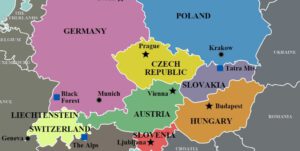
- Czech Republic
- Slovak Republic
- Republic of Poland
- Republic of Hungary
- Republic of Romania
- Republic of Germany
- Republic of Austria
Universities of Czech Republic:

- Charles University , Prague
- Czech Technical University, Prague
- Masaryk University, Brno
- Brno University of Technology , Brno
Charles University, Prague:
 Founded on 1348 by Charles IV, Charles University in Prague is the best university in the Czech Republic, ranking fifth among the best emerging universities in Europe and Central Asia
Founded on 1348 by Charles IV, Charles University in Prague is the best university in the Czech Republic, ranking fifth among the best emerging universities in Europe and Central Asia- It is one of the oldest European universities, and within a very short time achieved international fame, it had four faculties: theology, arts and law, and medicine
- Charles University today consists of 17 colleges with more than 51,000 students, including 7,800 doctoral students. The campus is located in the capital Prague, adding a beautiful and attractive appeal to this city and lively to tourists, along with various job opportunities
Czech Technical University, Prague:
 It is one of the largest and oldest technical universities in Europe, and was founded on the initiative of Joseph Christian Wallenberg on 18 January 1707 by Emperor Joseph I.
It is one of the largest and oldest technical universities in Europe, and was founded on the initiative of Joseph Christian Wallenberg on 18 January 1707 by Emperor Joseph I.- The University ranked seventh in the EECA rankings of the best emerging universities in Europe and Central Asia.
- The University has eight faculties, which offer more than 100 different programs, mainly in the fields of engineering and all related. There are about 24,000 students enrolled at the university and postgraduate levels.
- The University is proud of many world-renowned graduates, including physicist Christian Doppler who has the Doppler effect theory.
Masaryk University, Brno:
-

It is the second largest university in the Czech Republic, founded in 1919 in Brno as the second Czech university. She is a member of the Compostela University Group and the Utrecht Network, both of which seek to foster collaboration between universities across Europe.
- The university ranks tenth among the best emerging universities in Europe and Central Asia, with over 36,000 students studying in nine colleges. It has teaching programs in both English and German, making it the focus of attention for many international students. It was named after Thomas Garage Masaryk, the first president of an independent Czechoslovakia, as well as the leader of the movement to establish a second Czech university.
- In 1960 the university was renamed Jan Evangelista after the renowned Czech biologist but regained its original name in 1990 after the Velvet Revolution. Since 1922, more than 17,000 students have graduated from the university, and renowned professors such as Roman Jacobson (1896–1982) are renowned linguist.
Brno University of Technology , Brno:
- Founded in 1899 in Brno, it ranks nineteenth in the world ranking (EECA). The university initially participated in one civil engineering course, but gradually grew into a large academy with about 22,000 students in eight colleges.
- The University is involved in several EU projects to support internationalization such as Erasmus, Tempus, Leonard and others.
Universities of Slovakia Republic:
- Comenius University , Bratislava:

- Slovak University of Technology , Bratislava
- Slovak Medical University , Bratislava
Universities of Slovakia Republic:
 Is one of the oldest universities in Slovakia. The university was founded in 1919 and renamed Jean-Amos Comenius – a famous teacher and philosopher.
Is one of the oldest universities in Slovakia. The university was founded in 1919 and renamed Jean-Amos Comenius – a famous teacher and philosopher.- It is the largest university in Slovakia, with more than 30,000 students and more than 2,000 professors. Departments of the University: – collage of rights – Management college – Faculty of Social and Economic Sciences – Faculty of medicine – Faculty of Medicine Yassenieva – faculty of Pharmacy Faculty of Philosophy Faculty of Natural Sciences – Faculty of Mathematics, Physics and Informatics – Faculty of Physical Education and Sports – Roman Catholic College of Theology Cyril and Methodius – Evangelical Body / College Features : The education sector in Slovakia is at least as prestigious and advanced as it is a strong competitor to the most modern European countries.
- Slovak universities have international standards, at all levels (curriculum, school system,…), making Slovakia the destination of many international students. International recognition of degrees awarded by Slovak universities. Low tuition and living costs.
- Navigate freely in Europe. Low crime rate in Slovakia. Its presence is in central Europe, bordering the Czech Republic on the northwest, Poland on the north, Ukraine on the east, Hungary on the south and Austria on the southwest.
Slovak University of Technology , Bratislava:
- Is the biggest and oldest university of technology in Slovakia Established 1937, In the 2012 Academic Ranking of World Universities it was ranked in the first 150 in Computer Science, the only university in central Europe in the first 200 with 18375 students. However, it is highrise of the Faculty of Civil Engineering.
 University structure:
University structure:
- Faculty of Civil Engineering
- Faculty of Mechanical Engineering
- Faculty of Electrical Engineering and Information Technology
- Faculty of Chemical and Food Technology
- Faculty of Architecture
- Faculty of Materials Science and Technology (in Trnava)
- Faculty of Informatics and Information Technologies
- Institute of Management
- Institute of Engineering Studies
Slovak Medical University, Bratislava:
- The Slovak Institute for Postgraduate Education of Physicians, established on May 1, 1953 in Trenčín, laid the foundations of education of healthcare professionals in Slovakia.
- From July 7, 1966, the Institute moved into new premises in Bratislava, under a new name – The Institute of Further Education of Physicians and Pharmacists, which remained until 1991.
- On July 1, 1991, the name was changed to the Institute for Further Education of Professionals in Healthcare, and later, resulting from requirements in practice, the last change on November 1, 1998 transformed it into the Slovak Postgraduate Academy of Medicine in Bratislava.
- The Slovak Medical University in Bratislava is the only university in Slovakia that provides monothematic education for healthcare professions in all three degrees of higher education, and at the same time, the only institution that has guaranteed complex education of healthcare workers in Slovakia.
The university has four faculties:
- Faculty of Medicine
- Faculty of Public Health Studies
- Faculty of Nursing and Professional Health Studies
- Faculty of Health
Universities of Poland Republic:

- University of Warsaw
- Jagiellonian University or University of Kraków
- Cracow University of Economics
Universities of Poland Republic:
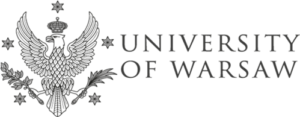 It was founded as a Royal University in 1816, is the largest university in Poland. It employs over 6,000 staff including over 3100 academic educators.
It was founded as a Royal University in 1816, is the largest university in Poland. It employs over 6,000 staff including over 3100 academic educators.- It provides graduate courses for 53,000 students (on top of over 9200 postgraduate & doctoral candidates). The University offers some 37 different fields of study, 18 faculties and over 100 specializations in Humanities, technical as well as Natural Sciences.
- Today, the University of Warsaw consists of 126 buildings & educational complexes with over 18 faculties is: Biology, Chemistry, Journalism & Political Science, Philosophy & Sociology, Physics, Geography & Regional Studies, Geology, History, applied linguistics and Slavic Philology, Economics, Pedagogy, Polish language, Law and Public administration, Psychology, Applied Social Sciences, Management & Mathematics, Computer Science & Mechanics.
Jagiellonian University or University of Kraków:
- The Jagiellonian University is the oldest university in Poland founded in 1364, the second oldest university in Central Europe, and one of the oldest surviving
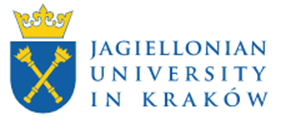 universities in the world.
universities in the world.
The campus of the Jagiellonian University is centrally located within the city of Kraków. The university consists of fifteen faculties, including the humanities, law, the natural and social sciences, and medicine. The university employs roughly 4,000 academics and has more than 40,000 students who study in some 80 disciplines. - Due to its history, the Jagiellonian University is traditionally considered Poland’s most reputable institution of higher learning, this standing equally being reflected in international rankings.
- The Jagiellonian University is a member of the Coimbra Group and Europium.
Teaching and research at UJ is organised by faculties, which may include a number of other institutions:
- Law and Administration, Medicine, Pharmacy and Medical Analysis, Health Care, Philosophy, History, Philology, Polish Language and Literature, Physics, Astronomy and Applied Computer Science, Mathematics and Computer Science, Chemistry, Biology and Earth Sciences, Management and Social Communication, International and Political Studies, Biochemistry, Biophysics and Biotechnology, University Center of Veterinary Medicine (joint faculty with Agricultural University of Krakow), National Center of Syncrotron Radiation SOLARIS (off-departmental facility).
Cracow University of Economics:
- Is one of the five polish economics universities. CUE came into existence in 1925. It is the biggest university of economic sciences in Poland.
- Kraków University of Economics is one of the three largest universities in Kraków, after Jagiellonian University and the AGH University of Science and Technology.
- The motto and mission of the university in Latin is “Rerum cognoscere causas et valorem” (in English “To learn the causes and values of things. To provide universal education.
- To bring together professional and general knowledge of methodological and theoretical character.”) Its 17-acre (69,000 m2) campus is in the vicinity of historical medieval Old Town of Kraków and easily accessible both on foot or by public transportation.
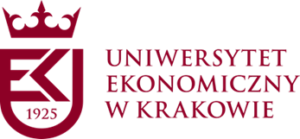 In addition to the main campus in Kraków, the university has seven Remote Teaching Centres in the cities of the region.
In addition to the main campus in Kraków, the university has seven Remote Teaching Centres in the cities of the region.
- Faculty of Economics and International Relations
- Faculty of Finance
- Faculty of Commodity Science
- Faculty of Management
Universities of Hungary Republic:
- Eötvös Loránd University ( ELTE )

- Budapest University of Technology and Economics
- Corvinus University of Budapest
Eötvös Loránd University (ELTE):
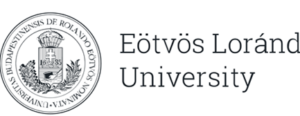 The predecessor of Eötvös Loránd University was founded in 1635 by Kingdom of Hungary, In 1770, the University was named Royal University of Pest until 1873, then University of Budapest until 1921, when it was renamed Royal Hungarian Pázmány Péter University after its founder Péter Pázmány.
The predecessor of Eötvös Loránd University was founded in 1635 by Kingdom of Hungary, In 1770, the University was named Royal University of Pest until 1873, then University of Budapest until 1921, when it was renamed Royal Hungarian Pázmány Péter University after its founder Péter Pázmány.- ELTE is Hungary’s largest scientific establishment with 118 PhD programs at 17 doctoral schools, and offers 38 bachelor’s programs, 96 master’s programs, and over 50-degree programs.
- ELTE is affiliated with 5 Nobel laureates, as well as winners of the Wolf Prize, Fulkerson Prize and Abel Prize, the latest of which was Abel in 2012.
The eight faculties are:
Faculty of Law and Political Sciences, Faculty of Special Education, Faculty of Humanities ,Faculty of Informatics, Faculty of Education and Psychology, Faculty of Social Sciences.
Budapest University of Technology and Economics:
- It was the first institute in Europe to train engineers at university level. It was founded in 1782.

- Is the most significant University of Technology in Hungary and is considered the world’s oldest Institute of Technology which has university rank and structure.
More than 110 departments and institutes operate within the structure of eight faculties. - About 1100 lecturers, 400 researchers and other degree holders and numerous invited lecturers and practising expert specialists participate in education and research at the Budapest University of Technology and Economics. Approximately 1381 of the university’s 21.171 students are from 50 countries abroad. The Budapest University of Technology and Economics issues about 70% of Hungary’s engineering degrees. 34 professors/researchers of the university are members of the Hungarian Academy of Sciences.
- Faculty of Civil Engineering, Faculty of Mechanical Engineering, Faculty of Architecture, Faculty of Chemical Technology and Biotechnology, Faculty of Electrical Engineering and Informatics, Faculty of Transportation Engineering and Vehicle Engineering, Faculty of Natural Sciences, Faculty of Economic and Social Sciences
Corvinus University of Budapest:

- The university is in an urban setting, Established In 1920, The faculties operate in multiple buildings that stand in the city centre of Budapest.
- Corvinus University accepts students at six faculties and offer courses leading to degrees at the bachelor, master and doctoral level .
- The University was listed in the top 50 in the Financial Times European Masters in Management rankings and was the first Hungarian university mentioned among the best in the area of agriculture.
- Ministers of finance, chairmen of the National Bank of Hungary and prime ministers studied at Corvinus.
- The University is a research university oriented towards education. The university currently has an enrolment of approximately 14,500 students, offering educational programmes in business administration, economics, and social sciences.
Universities of Romania Republic:
 Technical University of Civil Engineering of Bucharest:
Technical University of Civil Engineering of Bucharest:- Transylvania University of Brașov
- Alexandru Ioan Cuza University
Technical University of Civil Engineering of Bucharest:
- The Technical University of Civil Engineering of Bucharest is a public university in Bucharest, Romania, founded in 1948.
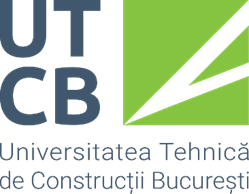 It was formerly known as the Institute of Civil Engineering of Bucharest. UTCB is a member of the Romanian Alliance of Technical Universities.
It was formerly known as the Institute of Civil Engineering of Bucharest. UTCB is a member of the Romanian Alliance of Technical Universities.
Technical University of Civil Engineering is organized into 7 faculties and one department.- The university offers 4-year programmes, awarding the degree of Bachelor of Science (Engineer), and graduate/postgraduate programmes awarding the degrees of Master (2-year programmes) and Doctorate/PhD (3-year programmes)
Transylvania University of Brașov:
- The first higher education school in Brasov was founded in 1940 , has eighteen faculties, a total of over 19,000 students, and more than 700 academic staff.
 The University offers 105 days license areas, 12 areas for distance education, and 5 areas for higher reduced frequency, as well as 73 graduate programs and 18 doctoral programs.
The University offers 105 days license areas, 12 areas for distance education, and 5 areas for higher reduced frequency, as well as 73 graduate programs and 18 doctoral programs.
The University provides courses of study in the following Faculties:
- Faculty of Mechanical Engineering, Faculty of Technological Engineering, Faculty of Civil Engineering, Faculty of Materials Science & Engineering, Faculty of Electrical Engineering & Computer Science, Faculty of Food and Tourism, Faculty of Wood Processing, Faculty of Forestry, Faculty of Economics, Faculty of Mathematics & Computer Science, Faculty of Music, Faculty of Medicine, Faculty of Law, Faculty of Sociology & Communication, Faculty of Sports & Physical Education, Faculty of Letters, Faculty of Product Design & Environment, Faculty of Psychology & Education Sciences
Alexandru Ioan Cuza University:
- Is the oldest university of Romania, and one of its advanced research and education institutions establishment in 1860. Academic staff 1,723 ,Students 35724 (2015-2016) Undergraduates18,594 Postgraduates 7,200.
 The University is a member of some of the most important university networks and associations: the Coimbra Group (CG), Utrecht Network, European University Association (EUA), International Association of Universities (IAU), University Agency of Francophony (AUF), and the Network of Francophone Universities (RUFAC).
The University is a member of some of the most important university networks and associations: the Coimbra Group (CG), Utrecht Network, European University Association (EUA), International Association of Universities (IAU), University Agency of Francophony (AUF), and the Network of Francophone Universities (RUFAC).- The Faculty of Biology, The Faculty of Chemistry, The Faculty of Computer Science, The Faculty of Economics and Business Administration, The Faculty of Geography and Geology, The Faculty of History, The Faculty of Law, The Faculty of Letters, The Faculty of Mathematics, The Faculty of Philosophy and Social-Political Sciences, The Faculty of Physical Education and Sports, The Faculty of Physics, The Faculty of Psychology and Education Sciences
Explanations
- During his education, the student can work 1000 working hours per year free of taxes and fees, ranging from 8,000 to 12,000 Euro per year.
- ´The cost of accommodation on campus and the monthly expense of the student ranges from € 80 and above depending on the student’s living, and the country chosen for education.
- A student who excels in the study gives the university financial assistance such as the payment of expenses for residence and living and so on.
The university degree obtained by the student allows him to work in the countries of the European Union, the United States of America, Canada and Australia without an equation. - All specializations start with a preparatory year followed by 6 core years until the Master.
The student can pursue his doctorate at the university where he is studying and can sign a work contract with the university during his doctoral studies. - The student’s approval comes within two weeks after the required list has been supplied.
The official documents will be processed in full of the grant amount for seven years within a month from the date of approval.
The University Preparatory Institute sends the official approval letter and registration data as soon as the required fees are paid.
